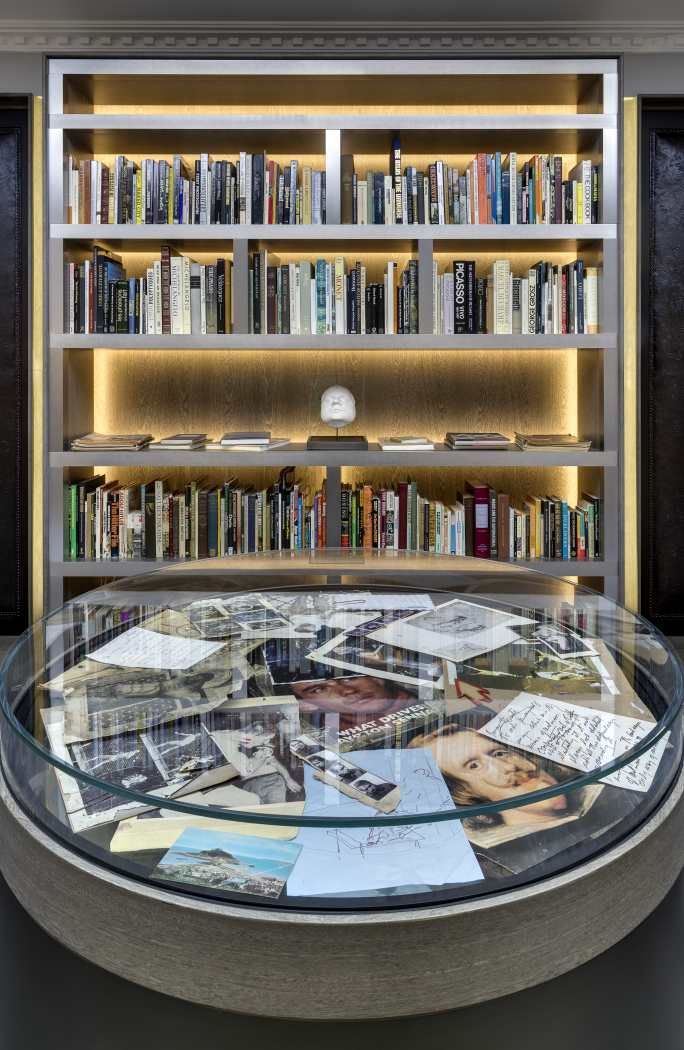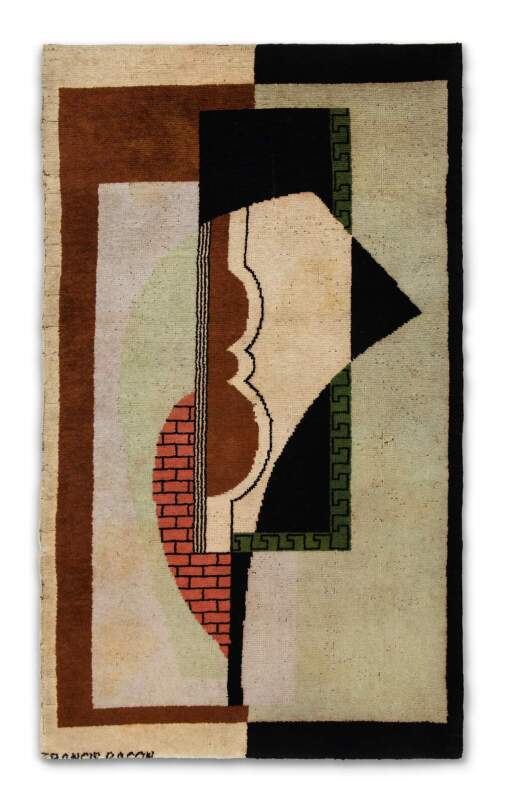T his year marks the 30th anniversary of Francis Bacon's death, in April 1992. In tribute, Sotheby’s Paris are presenting ‘Inside the World of Francis Bacon: Works from the Collection of Majid Boustany'.
Majid Boustany is a dedicated Bacon aficionado, collector and founder of the Francis Bacon MB Art Foundation in Monaco. The collection being sold at Sotheby's includes twenty works spanning over fifty years, including rare and important works by the artist, historic objects of ephemera, works by Bacon’s acquaintances such as Graham Sutherland, Louis Le Brocquy and Roy de Maistre, as well as portraits of the artist by photographers such as Cecil Beaton, Don McCullin and Peter Beard.
Inside the World of Francis Bacon
Sotheby's Guillaume Mallécot met Majid at his Monaco base in order to find out more about the Foundation, Boustany's deep passion for the artist' s work and why he's bringing the collection to Sotheby's.
Majid, thank you for welcoming me here in Monaco to the Francis Bacon MB Art Foundation. Could you tell us about its history?
I created the Francis Bacon MB Art Foundation in Monaco in 2014, the only non-profit foundation dedicated to promoting a better understanding of Francis Bacon's work, life and creative process. One of my wishes was to pay particular attention to the period he spent living and working in Monaco and France. The Foundation's philanthropic activities include providing support for research and artists, awarding a research scholarship every four years to a doctoral student at the École du Louvre and a support scholarship every two years to a graduate of the Villa Arson in Nice. The Foundation also supports publications and documentaries on Bacon and participates in exhibitions related to the artist, in collaboration with national and international institutions. In addition, the Foundation is open all year round to researchers and art historians, as well as to the public for free guided tours. The Foundation's collections, archives and library offer an exceptional diversity of documents for those wishing to research Francis Bacon.

© Whitford Fine Art, London
Where does your interest in Bacon's work stem from?
My encounter with Bacon's oeuvre goes back to my academic years in London. I was pursuing a course in history of art and during a visit to the Tate Gallery, when I was in my twenties, I was confronted with one of his major triptychs, 'Three Studies for Figures at the Base of a Crucifixion' (1944), which challenged interpretation and triggered in me the need to explore his world. In the course of my research, I discovered that the artist had first visited Monaco in the early 1940s, that he had been a Monaco resident from July 1946 until the early 1950s, and that he had been a regular visitor to the Principality and the south of France with his family, lovers and circle of friends until the end of his life.
'His images... have captivated and haunted me for years. Powerful and tinged with intense pain, they disturb, shock, fascinate and have such a spellbinding power that leaves no one indifferent.'
When Bacon burst into my life, I was quickly fascinated by this singular, unclassifiable, self-taught and uncompromising giant, whose paintings raise burning questions. This observer of his time produced monumental and tragic works. His images, which he described as 'a concentration of reality', have captivated and haunted me for years. Powerful and tinged with intense pain, they disturb, shock, fascinate and have such a spellbinding power that leaves no one indifferent.

© Carlos Freire / MB Art Collection
What was the first Francis Bacon work that you bought?
The first Francis Bacon painting I purchased was 'Study for a Portrait' (1979). It is a portrait of John Edwards, who was the artist's close friend and muse for over fifteen years and Bacon's heir.
Why are you selling these works now?
I wished to commemorate the thirtieth anniversary of the artist's death in my own way, by organising a unique event-sale that would present for the first time, rare works, exceptional memorabilia and photographs, as well as works by other artists who gravitated around Francis Bacon. Furthermore, the sale of these pieces from my collection is intended to support and perpetuate the various actions and missions of my Foundation.

What is your favourite work in the sale?
My favourite work in the selection is 'Figure Crouching' , a 1949 painting probably painted in Monaco, one of the first works in which the artist was able to depict the human condition in all its fragility. It is an intriguing work that reveals a half-human, half-animal form in the centre of the composition, Bacon's first crouching figure. This is also one of the first paintings in which the artist is using the cage iconography in his composition, foreshadowing those in his Pope series of 1951.
Why did you choose to sell this collection in Paris?
Bacon always declared that Paris was 'the most beautiful and marvellous city in the world'. He was aware of the pre-eminence of the City of Light as a cultural and artistic capital from an early age when he first moved there in the late spring of 1927. He always looked to the French as being the ultimate arbiters in virtually every domain that interested him and he often admitted that it was what the French thought of his work that mattered most to him. It was in Paris that this Francophone and ardent Francophile was most highly regarded and unanimously acclaimed during his lifetime. Furthermore, the French capital offered him a retrospective exhibition at the Grand Palais in 1971, that has become legendary today. Bacon even had a pied-à-terre in Paris from 1974 to 1987.

© Eddy Batache
Also included in the sale is an incredible Modernist rug from 1931 designed and indeed, signed by Bacon. Would you like to tell us more about it?
Bacon's talent for design is a lesser-known facet of the artist, but one that has always fascinated me and the Foundation has the most important collection of works from that period. In 1929, Bacon, then 20 years old, returned to London after a decisive stay in Paris. He had been deeply and permanently influenced by what he had seen of the contemporary art scene there, and in particular by the creations of the Modernists, such as Eileen Gray, whom he had discovered at the galerie Jean Désert in Paris. In January 1930, he established himself as an interior decorator in a garage converted into a workshop, where he designed Modernist furniture, which was the subject of an article in The Studio magazine that same year, entitled ‘The 1930 Look in British Decoration’.
Few works from this period have survived, around fifteen design pieces in all, and each one is a holy grail. The rug that Sotheby's is presenting at the sale, from the exceptional collection of the Château de Gourdon, is a remarkable example of this, as only ten rugs have survived. Bacon's furniture and rug designs would also considerably influence the composition and the iconography of a number of his future paintings.
It's notable how generously the Foundation has supported publications or documentaries on Bacon.
The Foundation publishes or co-publishes books on Francis Bacon. It also financially supports a large number of books on the British painter or related to him. In addition, our institution produces or sponsors short films on Francis Bacon, including interviews and documentaries. The Francis Bacon MB Art Foundation produced its first documentary film, Bacon: the Van Gogh Sequence'.
It also provided financial support for the documentary Connexions: Bacon-Vélasquez produced by France Télévisions in 2020, and took part in a feature entitled À Monaco, Francis Bacon sort le grand jeu broadcast on 9 June 2021 on Arte channel in the magazine programme Invitation au Voyage.
Is there anything the Francis Bacon MB Art Foundation has coming up that you can tell us about?
The Foundation is currently producing a documentary on the relationship between Francis Bacon and the French artist Ernest Pignon-Ernest, which will be available in October on the Foundation's website and on You Tube. This film will not only include fascinating interviews with Ernest Pignon-Ernest, but also with Yves Peyré, Henri-François Debailleux, Jean Frémon and Franck Maubert.
You are also a patron of the Ecole du Louvre and the Louvre Museum. Could you tell us more about this?
I created in 2020 an endowment fund dedicated to the conservation and enhancement of the Musée du Louvre's collections, in particular certain works of the museum that were sources of inspiration for Bacon's paintings.
Recently, I had the privilege of becoming the patron of an ambitious architectural project entitled ‘École du Louvre 2021-2022’, inaugurated by the Minister of Culture Roselyne Bachelot-Narquin in March 2022, to include the creation of a research centre and the redevelopment and refurbishment of the institution's library, documentation and IT services.
On this occasion, I donated two sculptures by Antony Gormley to the École du Louvre, as well as one of Francis Bacon's easels from his Parisian flat, at Rue de Birague.






